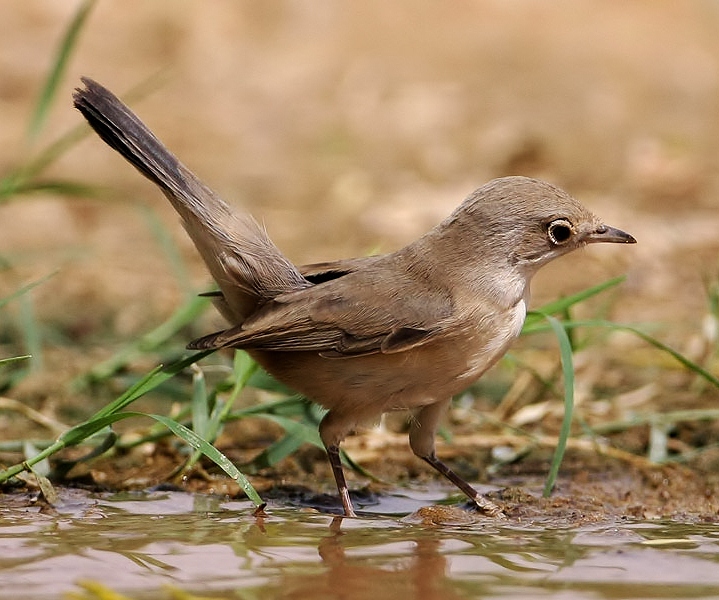 |
| Photo by Pekka Fågel (Kuwait Bird Sightings) |
Common name:
Menetries’s warbler (en); toutinegra-de-Ménétries (pt); fauvette de Ménétries (fr); curruca de Ménétries (es); tamariskengrasmücke (de)
Taxonomy:
Order Passeriformes
Family Sylviidae
Range:
This species is found breeding from Israel and Turkey to Iraq, the Caucasus and around the Caspian Sea in southern Russia, northern Iran and into Turkmenistan, Uzbekistan and Kazakhstan. They migrate south to winter in the Arabian Peninsula and along the coasts of the Persian Gulf and the Red Sea.
Size:
These birds are 12-14 cm long and have a wingspan of 15-19 cm long. They weigh 7-11,5 g.
Habitat:
The Menetries’s warbler is mostly found in dry scrublands, dry mountain slopes, along riverbanks and desert fringes. They can also be found in rural gardens and plantations and outside the breeding season also in saltmarshes and dry savannas. This species is found from sea level up to an altitude of 1.400 m.
Diet:
They forage among the leaves and branches of scrubs, taking insects and other invertebrates, namely grasshoppers, bugs, moths, butterflies, ants, wasps and beetles.
Breeding:
Menetries’s warblers breed in April-July. They nest is built by both sexes, consisting of a deep cup made of twigs, plant stems, grass leaves, stems, rootlets, plant fibres, down, and spider webs, lined with finer grasses and rootlets, small feathers and hair. It is placed among grasses or in a small scrur, up to 1 m above the ground. The female lays 4-6 glossy white eggs with brown spots, which are incubated by both parents for 11-13 days. The chicks are fed by both parents and fledge 10-11 days after hatching. Each pair raise 1 or rarely 2 broods per seasons.
Conservation:
IUCN status – LC (Least Concern)
This species has a very large breeding range. The population in Europe was estimated at 129.000-450.000 individuals, but it represents less than 5% of the species range. The population is suspected to be stable in the absence of evidence for any current declines or substantial threats.







